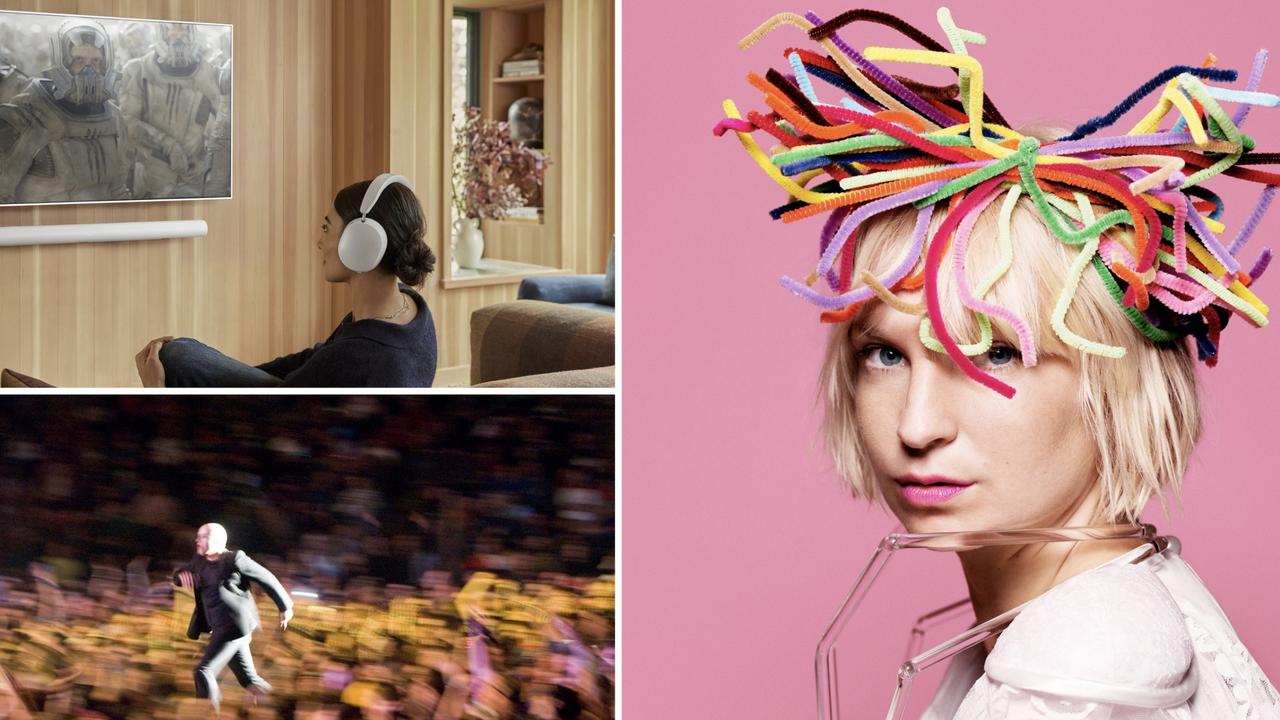How Luke Wood went from small time guitar player to running the biggest music business in the world
WHEN he was young, Luke thought he was going to “take over the world”. It turns out he was right, and it led to a big pay day.
HE thought he was going to “take over the world” as the 23-year-old press officer for Nirvana, but two decades later Luke Wood has surpassed the legendary band and is one of the most influential people in the music industry.
Wood is the master chess player who turned simple headphones, that cost anything from $200 to $500, into an iconic accessory used by more than one-quarter of the world’s music consumers.
He is the president of Beats Electronics and while many people associate the company with Dr Dre and record company boss Jimmy Iovine, it was actually Wood who developed the company into the behemoth Apple bought for $US3.2 billion last year.
Growing up, Wood dreamt of being a rock star. He had his own band in high school and another through college. While he had some fun touring, selling merchandise and recording CDs, his music career never really took off. But the next best thing did.
“I started off as a musician,” Wood told news.com.au. “My complete identity was basically around music. I only saw the whole world through the lens of music.
“But at the time, while I was playing in a band, I was in college and thought I would get a PHD in American Studies and teach.
“Then I went to do an internship with A&R records, just because I was interested in culture. I just fell in love with the ability to actually be around music all day as a job.”
In 1993, Wood was involved with some of the biggest bands in the world, including Nirvana and Sonic Youth.
“I found myself at 23 as the press officer for Nirvana. There was no looking back, and that was it. I had the greatest group of artists on my roster and we were going to take over the world.”
Moving up the chains, Wood worked for DreamWorks and Interscope Records — the latter, one of the biggest music labels in the world.
It was here he met Jimmy Iovine, already a big player in the industry, but soon to become one of the world’s dominant figures in music.
At the time Wood was in charge of signing up bands to these labels, hoping to put his stamp on popular music by discovering the next big thing, but still staying true to the types of bands he loved.
“I realised I could still make it in music by signing someone I was really, really passionate about — but they still needed to be able to appeal to the mainstream,” he said.
“The first group I signed with DreamWorks that did that was Jimmy Eat World, who I signed in 2000 before we released The Middle. Then I signed AFI and a band called Brand New.
“I just kept signing bands I was passionate about while having a clear vision of what could work on a major label.”
CHANGING THE WAY WE CONSUME MUSIC
Beats was a company that grabbed Wood’s attention when they formed in 2008. The company was focused on fixing one of his biggest problems in music — getting consumers to actually hear what the artist had intended.
Both Jimmy Iovine and Dr Dre shared Wood’s frustration of the fact that artists were painstakingly working to create music the best they could, for it then to be consumed by the listener with terrible quality $10 earbuds.
“When Jimmy and Dre thought of Beats I pretty quickly thought it was brilliant. Jimmy and Dre were just trying to work out ‘how do we fix sound? How do we move the music industry forward?’ And Dre came up with the name Beats.”
In 2011, Wood went to work for his old Interscope records boss, Iovine, a man he claims “was never satisfied in just running a label, he wanted to run the next generation of a music business”.
Because he was both a musician and music industry veteran, Iovine wanted Wood to help build the company on two fronts.
Firstly, he needed Wood’s input on developing the overall sound quality — something that would make people want to invest big dollars in headphones and speakers.
Secondly, and perhaps more importantly, Wood was one of the first people in the industry to acknowledge the potential of digital music distribution, and was responsible for the first commercial MP3 track, in Aerosmith’s Head First. Beats needed Wood’s forward thinking to develop a streaming service that would one day rival Spotify.
MORE THAN A FASHION STATEMENT
Beats started with the simple idea of delivering sound the way the contemporary artist intended, but needed to make that appealing to everyone. So, the idea of using Beats as fashion was first and foremost their most important thing.
“Before Beats came along that was not something headphones did,” Wood said. “So we learned from Apple and took loads of notes.
“This was in everything, from design to packaging and how to make everything about the headphones a whole experience.”
From there, the next thing was about building a great set of headphones. It wasn’t about making the best set of headphones for a studio, but about creating the best set of headphones for contemporary music, whether that be modern hip-hop or indie rock.
And finally, Wood said, it was all about marketing the products like they were the greatest things in the world.
“We marketed them like they were Eminem, like Nirvana, like they were the biggest thing in the world. They needed to be at the front of the store, not hidden at the back in the corner like headphones used to be,” he said.
“Everyone loves music, so why wouldn’t they be interested in seeing that?”
And he was right. It worked a beauty. Athletes and artists loved the headphones, at first due to their sound, and then their design. Fans then followed, and Beats had changed the music industry forever.
No longer were music listeners satisfied with their earbuds that came with their phone or crappy replacements from the supermarket. They demanded good sound, but also something that looked the part. And they were willing to pay through the nose for it.
“We came into an ecosystem where people didn’t think fidelity [sound quality] was important. When you think about a record store 10 years ago you didn’t see headphones or speakers, you didn’t necessarily see audio products. But now we’ve engaged the world around audio,” Wood said.
ATHLETE ENDORSEMENTS HELP SPREAD THE WORD
Those endorsements by athletes were seen by many as key to Beats’ success. But, for many athletes, they were just using them because they wanted to.
This was particularly evident during the 2012 Olympic Games, where endorsements were off limits. The company sent loads of athletes sets of headphones, with no obligations to wear them, and it worked a treat — the athletes were photographed wearing them before their events.
“The secret sauce for athletes is that everyone loves music,” Wood said.
“Very passionate people are generally very passionate about music. It’s an important part of an athlete’s performance and clearing your brain and becoming this other person when you are on the court.
“Anything that made that more powerful or a more emotional experience they really wanted. We were just really fortunate they were such fans.”
TAKING OVER THE INDUSTRY
By the start of 2014, Beats controlled 27 per cent of the global headphone market, and more than 50 per cent of the premium headphone market. That type of market capitalisation began to attract the world’s biggest company.
But the popularity of their headphones wasn’t the only thing that got Apple interested.
Steve Jobs completely revolutionised the music industry in the early 2000s with the introduction of iTunes and the iPod. By 2014, Apple could sense that another change was coming, and had already begun.
Beats had purchased the music streaming service MOG in 2012, to form the basis of its own streaming service. Wood was instrumental to the deal, and began overseeing the project of creating a music streaming service that focused on discovery. Something he felt modern music sorely missed with the demise of physical record stores.
Apple loved Beats Music and its successful headphone business and, in May last year, it bought Beats for $US3.2 billion.
“It was a lot of hard work to get where we are,” Wood said.
“We were brilliant, but we made lots of mistakes too. We kept pursuing the idea (to turn people onto premium audio). We knew once we had the idea ... we would focus on that and it got us there.”
WHAT THE FUTURE HOLDS
Through Apple Music and Beats headphones, you’d have to be extremely naive to not see Apple becoming the biggest music company in the world — if they’re not there already. But to Wood, it’s about much more than just making Beats bigger.
It was his belief the world was on the verge of a major new era of music consumption.
“The ability to actually really make a great record on your laptop actually exists, it’s no longer just a magic technological dream.
“We have Beats 1, a global radio station, and that’s an exciting thing. I think Apple Music is also a fantastic thing to drive people to music subscription services.
“Anyone in the value chain of creating music will benefit from a richer benefit around music, whether it’s the artist, manager or the guy pressing the record. If we fix that, we can change the world forever.”



